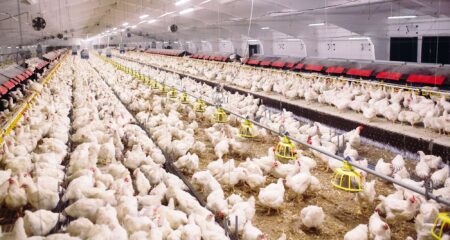By Andrea Shalal, David Shepardson, and Tamiyuki Kihara
WASHINGTON/TOKYO, Sept. 4 (Reuters) – U.S. President Donald Trump signed an order on Thursday to implement lower tariffs on Japanese automobile imports and other products that were announced in July, providing some relief to Japan’s export-heavy economy.
Formalizing the deal between the U.S. and a key Asian ally comes after months of negotiations, reduces uncertainty plaguing the massive Japanese auto sector since the July announcement and confirms an agreement for $550 billion of Japanese investment in U.S. projects.
The lower 15% tariffs on Japanese autos, down from the current 27.5%, are set to take effect seven days after official publication of the order.
The executive order also ensured that the 15% levy on Japanese imports agreed in July would not be stacked on top of those already subject to higher tariffs such as beef, while items previously subject to tariffs below 15% would be adjusted to 15%. This relief is retroactive to August 7.
In addition, it promised no tariffs on commercial airplanes and parts.
“Finally,” Ryosei Akazawa, Japan’s top trade negotiator, posted to X, in a nod to the months-long trade talks that had frustrated lawmakers in Tokyo. Thursday marked his 10th trip to the U.S. for the negotiations.
Speaking to reporters in Washington, Akazawa said Japan welcomed the executive order as “a steady implementation of the agreement reached on July 22.”
U.S. Commerce Secretary Howard Lutnick posted a video clip on X showing a conversation with Akazawa where he said the order “puts into effect the amazing, historic agreement.”
Trump’s levies on global shipments have dragged down Japan’s exports and hit Japanese carmakers hard.
Toyota 7203.T, which has flagged a nearly $10 billion profit hit from the tariffs, praised Trump’s efforts to reach a trade deal with Japan. “While nearly 80% of the vehicles Toyota sells in the U.S. are made in North America, this framework provides much needed clarity,” the company said in a statement.
The United States in July agreed to lower tariffs on imports of Japanese automobiles, but the timing remained unclear as Trump had yet to sign an executive order.
Rival exporter South Korea is still waiting on an executive order covering a similar trade agreement with the U.S., including a 15% tariff on U.S. imports from automakers like Hyundai Motor 005380.KS and Kia 000270.KS, down from 25%.
A South Korean trade official said on Friday that his country was assessing the potential impact of the executive order regarding Japan.
Shares of major Japanese automakers were up slightly on Friday, while those in South Korea were slightly lower.
Billions of Dollars in Deals
Trump’s order said Japan was “working toward an expedited implementation of a 75% increase of United States rice procurements… and purchases of United States agricultural goods, including corn, soybeans, fertilizer, bioethanol (including for sustainable aviation fuel)” and other U.S. products totaling $8 billion per year.
A separate joint statement released on Thursday said Japan would buy 100 Boeing BA.N planes, increase annual procurement of U.S. defense equipment “by billions of dollars” and explore a new Alaskan liquefied natural gas offtake agreement.
The joint statement also ensured the U.S.’s fifth-largest trading partner would always receive the lowest tariff rate on chips and pharmaceuticals of all the pacts negotiated by Washington.
Two-way trade between the two countries reached nearly $230 billion in 2024, with Japan running a trade surplus of nearly $70 billion.
Trump’s order on Thursday also reiterated that the Japanese government has agreed to invest $550 billion in the United States in projects that will be selected by the U.S. government.
The investment package, which will come in the form of equity, loans and guarantees from Japan’s government-owned banks, was agreed as part of the July trade deal.
The two governments also signed a memorandum of understanding on the details of the package on Thursday, stating it would focus on investments in key sectors such as chips, metals, pharmaceuticals, energy and shipbuilding to be made by January 2029, which coincides with the end of Trump’s presidential term.
Under the arrangement, available free cash flows from investments would be split in half until reaching an allocated amount, and then 90% would go to the United States.
The executive order on the tariff deal said that the United States “may modify this order as necessary” should Japan fail to implement its commitments under the agreement.
The agreement comes ahead of a key test for Japan’s embattled Prime Minister Shigeru Ishiba with his ruling party set to vote on Monday on whether to hold an extraordinary leadership election that could result in his ouster.
Ishiba has overseen his ruling coalition lose its majority in elections for both houses of parliament since coming to power last year amid voter anger over rising living costs and weak economic growth exacerbated by the trade tariff uncertainty.
While finalising the trade deal gives Ishiba an argument to stay on, he is unlikely to survive the backlash from within his own party, said David Boling of political risk consultancy Eurasia Group, estimating a 60% chance that he is forced out.
(Reporting by Tamiyuki Kihara, Andrea Shalal, David Shepardson, Makiko Yamazaki, and John Geddie; Additional reporting by Jihoon Lee and Hyunjoo Jin in Seoul; Editing by Marguerita Choy, Lincoln Feast, and Jamie Freed)


:max_bytes(150000):strip_icc()/IMG_1591-2048x1365-362687ca596f4814967abffff2b4be2c.jpg)
:max_bytes(150000):strip_icc()/SuccessfulFarmingShareImage-8fed6410b43147a19ed5ea1e3243227f.png)



:max_bytes(150000):strip_icc()/WongYuLiang-1498358040-39350a71adf34f7092b0cab33a699279.jpg)

:max_bytes(150000):strip_icc()/IMG_7575-ac6db3006a2145109bcc2df421c7a962.jpeg)

:max_bytes(150000):strip_icc()/Markets-3-Corn-up-3-19bdbeee0041452db8bce0a0f1c8b883.jpeg)